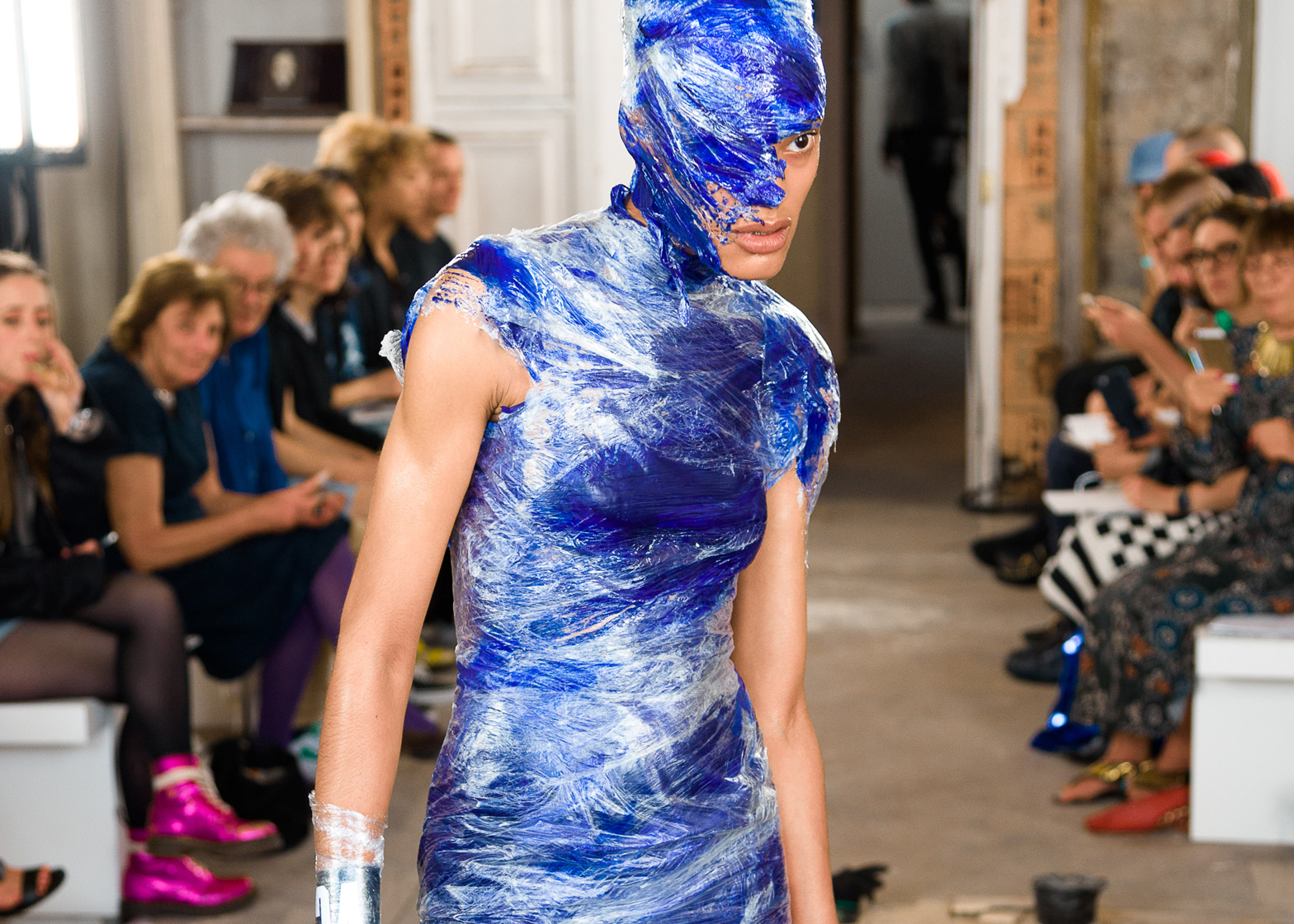Graduate shows 2016: cling-film dresses and pieces constructed from scrapped motorcycles are included in our design reporter Alice Morby's top five picks from this year's Royal College of Art Master of Arts in Fashion presentation.
The RCA Fashion Show took place in the abandoned Averard Hotel in Lancaster Gate – the first time in 20 years it has taken place outside the college's Kensington campus.
Graduating menswear, womenswear, knitwear, footwear and accessories students all showcased their designs during the presentation, which also included a contemporary dance routine and a spoken word performance.
It was the second presentation under the direction of Zowie Broach, who took over as head of the college's Fashion programme following the retirement of long-standing leader Wendy Dagworthy in 2014.
In keeping with last year's MA presentation, Broach changed the traditional format of the show and allowed only one look per student – each identified by a numbered card carried by the model.
Here are our top five picks from the 2016 show:
Stefanie Tschirky
Aiming to create the "perfect" dress, womenswear designer Stefanie Tschirky used scientific theories to help define silhouettes and lines in The Chaotic System in Space.
"I started to look into theories such as the Golden Ratio Theory and the Chaos Theory, finding perfection in chaos," she told Dezeen. "It led me to have many conversations with maths and physics students from the Imperial College London, as we questioned perfection and beauty and its meanings in science and art."
Using a mixture of threads and cling film, Tschirky created garments that appear to "seal the body" and become a second skin.
Tschirky directed her model to behave in a way that was "dark and fragile" during the presentation, directing her to the video work Acceptance by Bill Viola for inspiration.
Oksana Anilionyte
Oksana Anilionyte, who was previously involved in MIT's BioLogic textile project, presented a collection based on the relationship between the body and materials.
Titled Fluid Sense, the collection was developed through Anilionyte's extensive research into liquid-based materials.
A one-shouldered lilac- and orange-coloured top that looked as if it had been poured over the model was made from polymer-based fluid prints.
"[Fluid sense is] the feeling of wearing liquid clothes," Anilionyte told Dezeen. "Body temperature and natural perspiration stimulate polymer-based fluid prints that adapt to human body shapes and become a second skin."
"Liquid material shifts into a new form of textile that has a strong relation to the body."
Mao Tsen Chen
For his collection, Mao Tsen Chen decided to switch the roles of animals and humans, exploring what would happen should animals start taking materials from us.
"Us wearing real fur is like taking an animal's skin or clothes, so when animals start to fight back, they start to take our skin from us," Chen told Dezeen.
Using faux fur, chenille yarn, polyester, cellulose yarn and cotton, he created an extravagant coat with different layers of texture and volume.
Niels Gundtoft Hansen
Danish menswear designer Niels Gundtoft Hansen reflected on his childhood skating in Copenhagen to create oversized garments using heat-pressed tarpaulin.
"I grew up skating the wet streets of Copenhagen in a cold and yet isolated Nordic landscape," he said. "All my life I've been physically connected to tactile and rough environments."
He chose to express these qualities through a visual language he describes as "naive and goofy".
"I tell the story of lost kids hanging out by the industrial docks," he continued. "Vandalism is the agenda and their uniform is metamorphosed by the oil sea, wet asphalt and rusty containers."
Timothy Bouyez-Forge
Bouyez-Forge aimed to blur the lines between fashion and mechanics when he created a glossy, green womenswear item from scrapped pieces of a motorcycle.
"The outfit is almost like a mode of transport," he told Dazed & Confused. "Maybe it could take you to another land, another dreamscape."

